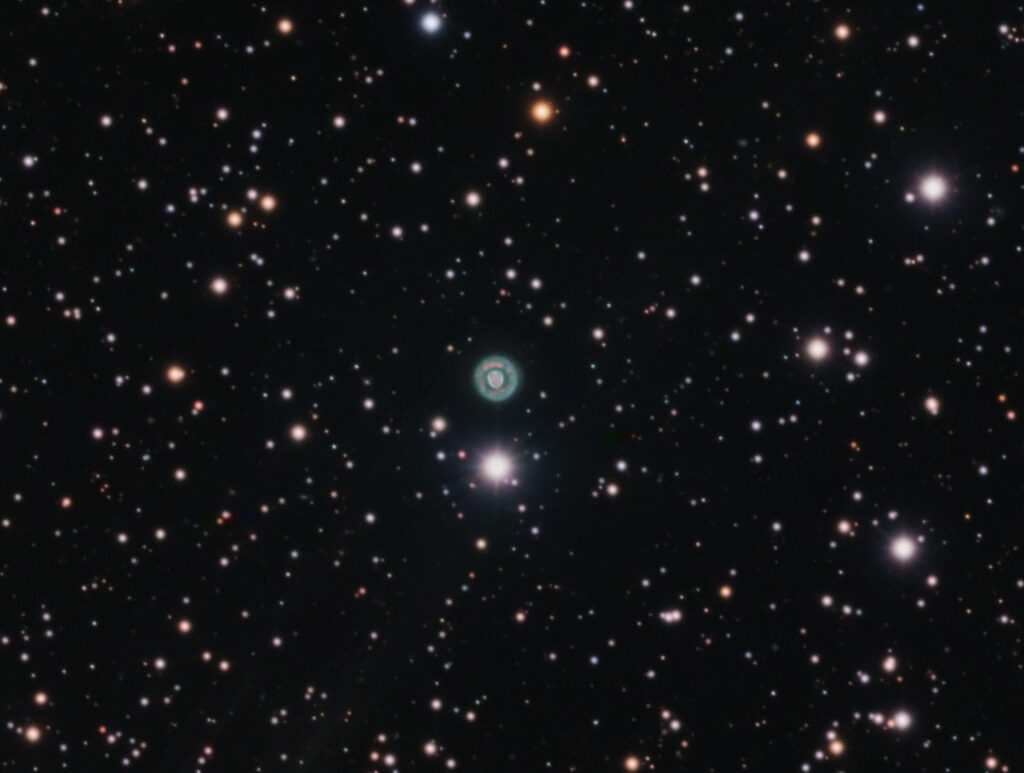NGC 2392
The Eskimo Nebula. Planetary Nebula, Gemini
- Description
- Technical
- Links
The Eskimo Nebula (NGC 2392), also known as the Clown-faced Nebula, Lion Nebula, or Caldwell 39, is a bipolar double-shell planetary nebula (PN). It was discovered by astronomer William Herschel in 1787. The formation resembles a person’s head surrounded by a parka hood. It is surrounded by gas that composed the outer layers of a Sun-like star. The visible inner filaments are ejected by a strong wind of particles from the central star. The outer disk contains unusual, light-year-long filaments.
NGC 2392 lies about 6500 light-years away, and is visible with a small telescope in the constellation of Gemini.
The nebula was discovered by William Herschel on January 17, 1787, in Slough, England. He described it as “A star 9th magnitude with a pretty bright middle, nebulosity equally dispersed all around. A very remarkable phenomenon.”
Telescope: Astro Physics 175EDF f8.3
Mount: Astro Physics 3600GTO “El Capitan”
Camera: SBIG STT8300
Guider: Mini Borg 50 / SBIG STi
L: 58×10 mins = 580 mins, R: 24×10 mins = 240 mins, G: 24×10 mins = 240 mins, B: 24×10 mins = 240 mins
Total Imaging Time: 21h 40m
Data Imaged remotely over 5 nights during January & February 2020.
Data acquisition & Processing by David Churchill.
None

